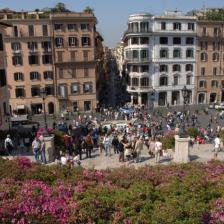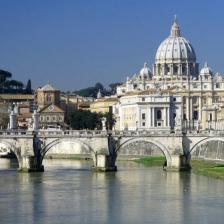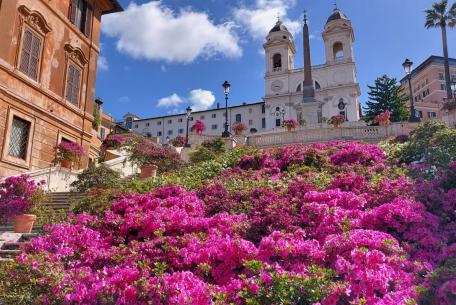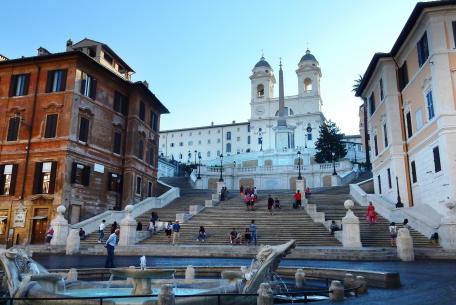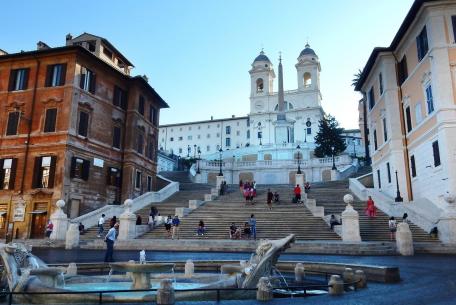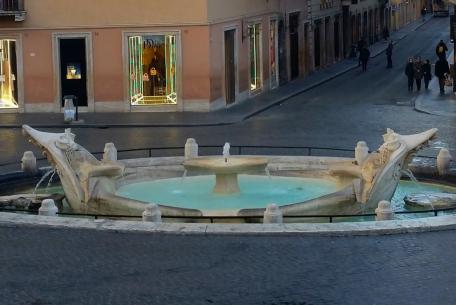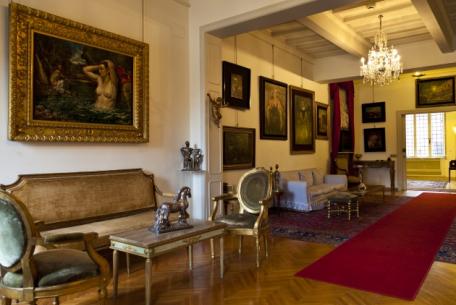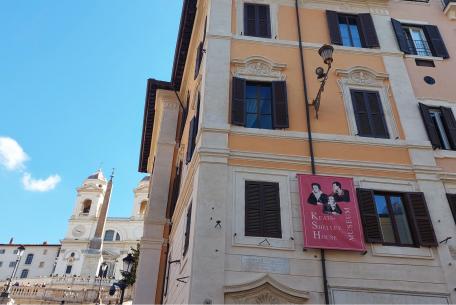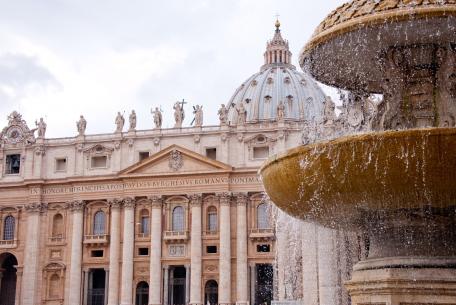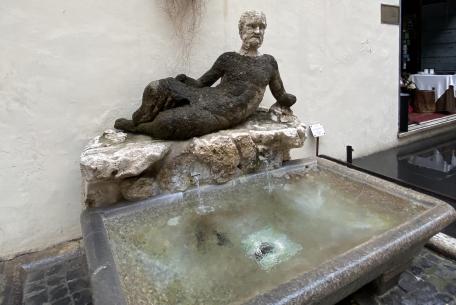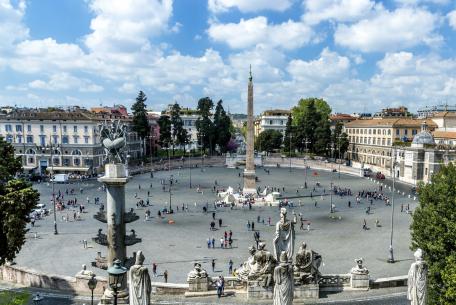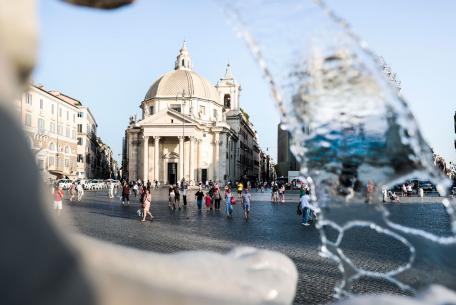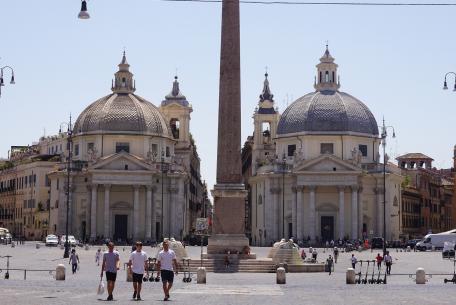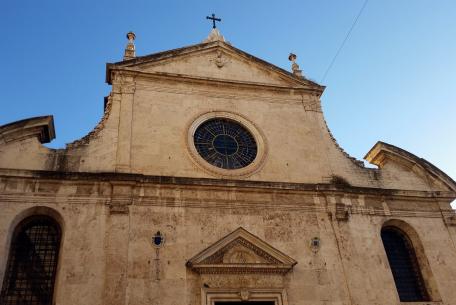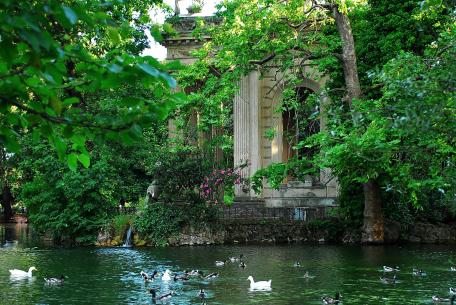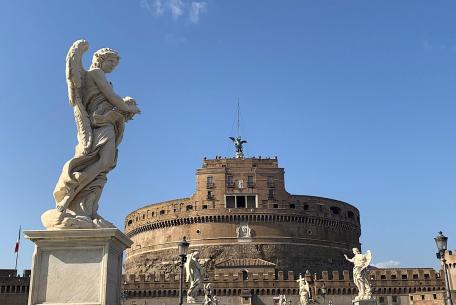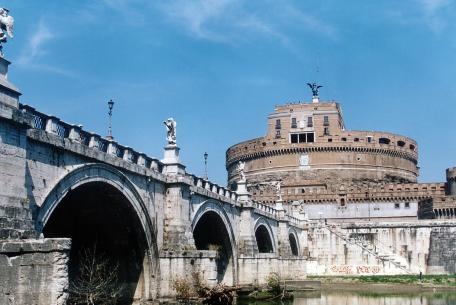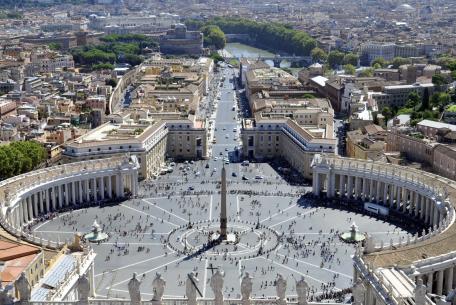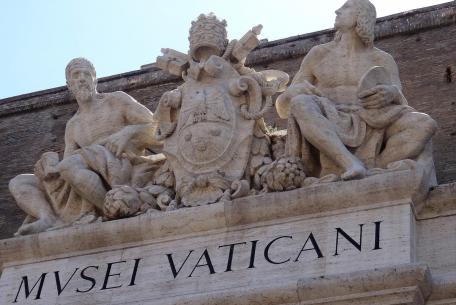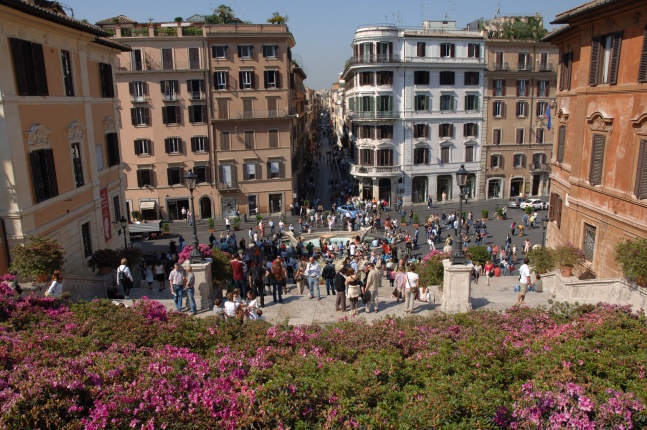
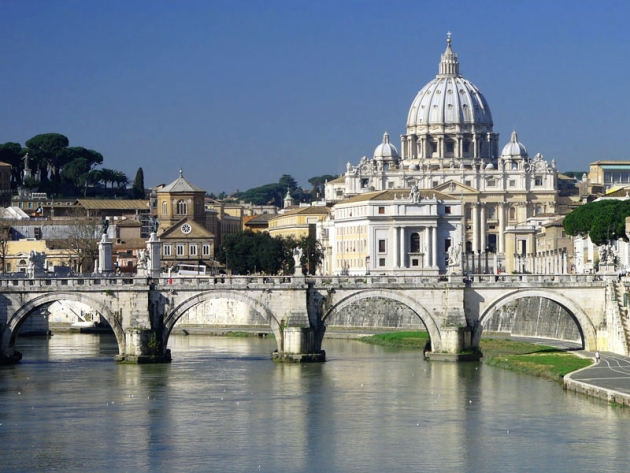
Our itinerary takes you to discover two of the most spectacular and famous squares in the Capital: Piazza di Spagna, an iconic place of art, style and romance, and Piazza San Pietro, an architectural masterpiece and symbol of world Christianity.
Let's enter Rome's heart of luxury with a walk along Via del Corso, Via Frattina and Via Condotti. After making some purchases or simply browsing around the refined boutiques and creative artisan shops of the area, we arrive in the spectacular Piazza di Spagna.
The magnificent 18th-century Spanish Steps in travertine, by Francesco De Sanctis, overlooks the square. Known as the "open-air living room of Rome", it rises towards the Church of the Santissima Trinità dei Monti, one of the five French Catholic churches in Rome. At the base of the Steps is the original Fountain of the Barcaccia, inspired by a boat immersed in water, sculpted by Pietro Bernini, father of Gian Lorenzo, between 1626 and 1629.
At number 31, in the 17th-century Palazzetto dei Borgognoni, we find the House Museum of Giorgio De Chirico, where the artist lived until 1978, the year of his death. Here, we can admire a magnificent collection of works of art, the artist's atelier, and his library. A few steps and, at number 26, we visit the Keats-Shelley House, the 18th-century building where the English romantic poet John Keats died in 1821, at the age of 25. Besides the artist's bedroom, the House Museum collects letters, manuscripts, portraits, and relics of the romantics and other great writers inspired by Keats, such as Oscar Wilde, Walt Whitman, Jorge Luis Borges and Elizabeth Barrett Browning.
On the left of the square, we go towards the enchanting via del Babuino. This street is rich in fascinating facts! Here are some of the so-called "Greek places" of Rome: the Church of Sant’Atanasio dei Greci and the Greek College - and one of the famous Talking Statues of the city, the Babuino. Part of a fountain, the statue represents a Silenus lying on his side, renamed Babuino (baboon) because of its ugliness and resemblance to a monkey.
A few steps and we reach the elegant Piazza del Popolo, designed by Giuseppe Valadier: a large ellipse around the Egyptian obelisk, embellished and framed by sculptures, gardens and fountains. On the square are the two twin churches, Santa Maria in Montesanto, also known as the "Church of the Artists", and Santa Maria dei Miracoli, initially designed by Carlo Rainaldi and later completed by Gian Lorenzo Bernini with the collaboration of Carlo Fontana. On the opposite side, the splendid Basilica of Santa Maria del Popolo stands, inside which masterpieces by Raphael, Bernini, Caravaggio, Annibale Carracci, Pinturicchio and his workshop are preserved.
Beyond the monumental Porta del Popolo, bike rides, museums, theatres, and places for children await you in Villa Borghese: a landscape jewel with villas, sculptures, monuments, and fountains, surrounded by centuries-old trees, ponds, Italian gardens, and large open spaces.
We cross the Tiber, head to the left, and pass the imposing Castel Sant’Angelo − ancient mausoleum, fortress, prison and, today, a national museum. Then, we arrive in a city square not to be missed by anyone visiting Rome: Piazza San Pietro.
Heart of world Christianity, it has a characteristic elliptical shape surrounded by the splendid colonnade, the work of Bernini, which welcomes pilgrims and tourists from all over the world in a symbolic embrace. Every Sunday, at noon, the believers gather in the square to attend the Angelus Domini and receive the Papal blessing when the Pope appears at the window of his study in the Apostolic Palace.
The majestic St. Peter's Basilica and its 16th-century dome, designed by Michelangelo and completed by Della Porta and Fontana, overlooks the square. The interior houses masterpieces created by the greatest artists − including Bernini, Maderno, Borromini, Canova − and places of immense historical value, such as the Vatican Grottoes and the pre-Constantinian Necropolis, where is the tomb of Peter.
Not to be missed a visit to the extraordinary collections of the Vatican Museums and the Sistine Chapel, to admire the wonderful Michelangelo's Last Judgment.
 Condividi
Condividi












































